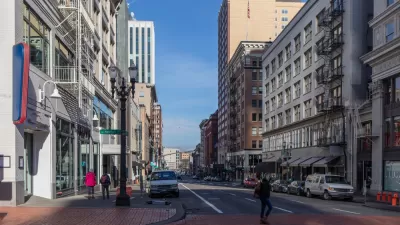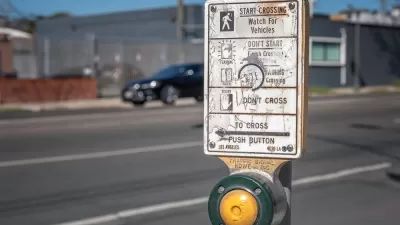Research from Chicago suggests that the city’s traffic calming infrastructure is concentrated in the most affluent neighborhoods, contributing to higher rates of road deaths in lower-income neighborhoods.

An article by Erica Gunderson for WTTW News examines the uneven deployment of traffic calming devices in Chicago, an issue that can have a significant impact on traffic safety amid rising rates of road deaths.
According to José Miguel Acosta Córdova, senior transportation policy analyst at the Little Village Environmental Justice Organization, Chicago’s wealthier North Side has more traffic calming measures in place than the South and West sides of the city. And while traffic tickets are also issued at higher rates in these neighborhoods, “Leslé Honoré of the Center for Neighborhood Technology says responding to traffic deaths with increased ticketing misses the mark.” As Honoré sees it, “What we need is better planning, what we need are streets that are designed for everyone and not just for cars.”
Honoré continues, “We know when this city was planned and how segregated it is, that Black and Brown communities weren’t given the infrastructure and were under resourced purposefully. And what that creates is the legacy of continued under-resourced communities, infrastructure that’s not maintained, streets and sidewalks that aren’t walkable.”
FULL STORY: Traffic Deaths Are On Rise This Year. How Does Chicago’s Segregation Impact Safety?

Alabama: Trump Terminates Settlements for Black Communities Harmed By Raw Sewage
Trump deemed the landmark civil rights agreement “illegal DEI and environmental justice policy.”

Planetizen Federal Action Tracker
A weekly monitor of how Trump’s orders and actions are impacting planners and planning in America.

Why Should We Subsidize Public Transportation?
Many public transit agencies face financial stress due to rising costs, declining fare revenue, and declining subsidies. Transit advocates must provide a strong business case for increasing public transit funding.

Understanding Road Diets
An explainer from Momentum highlights the advantages of reducing vehicle lanes in favor of more bike, transit, and pedestrian infrastructure.

New California Law Regulates Warehouse Pollution
A new law tightens building and emissions regulations for large distribution warehouses to mitigate air pollution and traffic in surrounding communities.

Phoenix Announces Opening Date for Light Rail Extension
The South Central extension will connect South Phoenix to downtown and other major hubs starting on June 7.
Urban Design for Planners 1: Software Tools
This six-course series explores essential urban design concepts using open source software and equips planners with the tools they need to participate fully in the urban design process.
Planning for Universal Design
Learn the tools for implementing Universal Design in planning regulations.
Caltrans
Smith Gee Studio
Institute for Housing and Urban Development Studies (IHS)
City of Grandview
Harvard GSD Executive Education
Toledo-Lucas County Plan Commissions
Salt Lake City
NYU Wagner Graduate School of Public Service





























